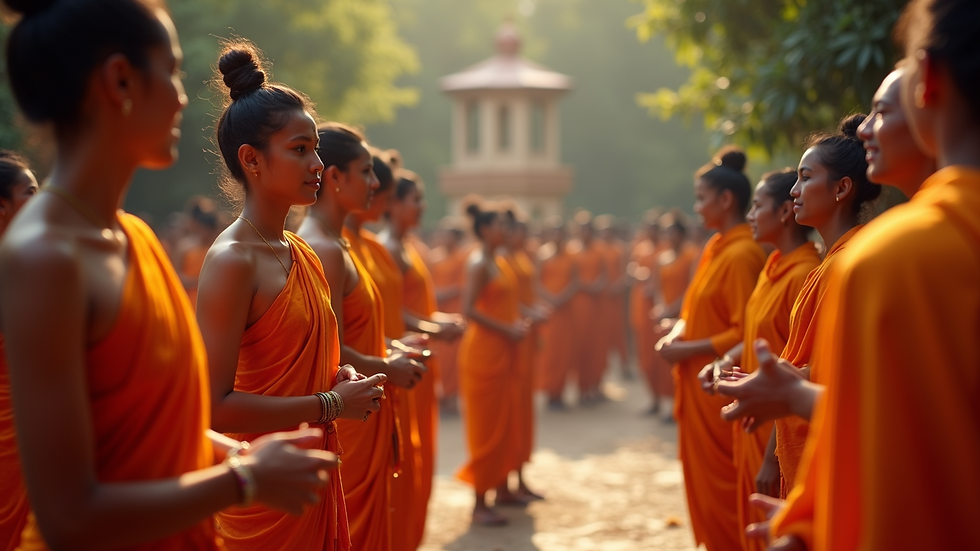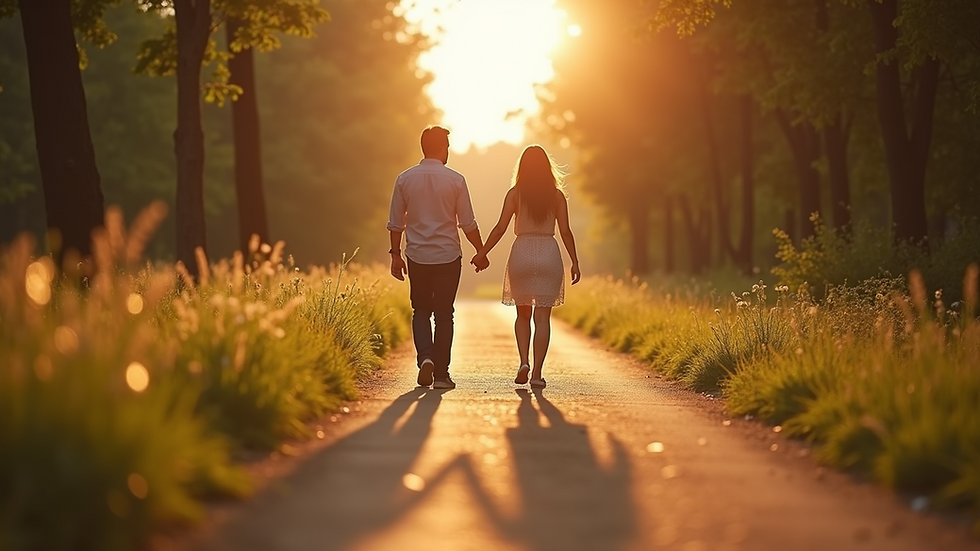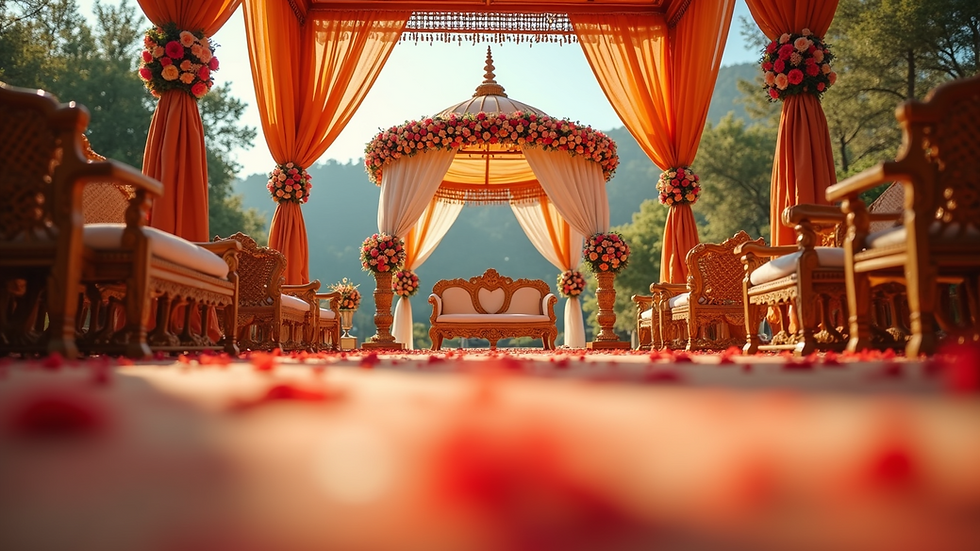How Storytelling Brings Indian Weddings to Life
- Nameless House
- Apr 9
- 4 min read
Indian weddings are renowned for their grandeur and rich cultural significance. However, beneath the elaborate attire, lavish decorations, and vibrant celebrations lies an intricate tapestry of stories waiting to be told. Storytelling plays a pivotal role in bringing these weddings to life, connecting generations and preserving traditions that have been passed down through the ages.
The Role of Storytelling in Indian Weddings
Storytelling isn't merely a pastime; it is deeply intertwined with culture, especially in the context of Indian weddings. Each ritual, each song, and every decorative element has a backstory that showcases the couple’s journey, family values, and spiritual beliefs.
For instance, during the Sangeet ceremony, families gather not just to celebrate but to narrate their collective histories through music. It becomes a medium of expressing joy, love, and the merging of two families. This storytelling aspect makes every wedding unique, as each family brings its own tales, enhancing the overall experience.

The Essence of Traditions and Narratives
Every Indian wedding is a celebration of traditions that are rich with symbolism and narratives. These stories have significance that goes beyond the surface level.
For example, the Baraat is a colorful procession of the groom’s side to the bride's home. This event is not just about the groom's arrival; it recounts tales of his family's lineage and cultural heritage. It symbolizes the joy and readiness to welcome the bride into the family. Knowing these stories enhances the understanding of the event's importance for everyone involved.
Statistics indicate that over 10 million weddings occur annually in India, each steeped in unique traditions and narrated stories. This brings forth the importance of storytelling in preserving these vital aspects of society.

What Do the 7 Steps in a Hindu Wedding Mean?
Central to many Hindu weddings are the Saptapadi or the seven steps. This ritual involves the couple taking seven steps together, where each step symbolizes a vow they take for their journey ahead.
First Step: Nourishment – the couple promises to provide for each other
Second Step: Strength – they vow to support each other in every endeavor
Third Step: Prosperity – they commit to their shared financial health and wealth
Fourth Step: Family – they pledge to respect and love their future family
Fifth Step: Health – they promise to care for one another’s physical and mental well-being
Sixth Step: Friendship – the couple commits to being best friends and confidants
Seventh Step: Lifelong commitment – they vow to remain together in all circumstances
Each of these steps is accompanied by specific prayers and promises that add depth to the couple’s bond. This ritual not only emphasizes their commitment but also tells a story of unity, love, and shared goals.

Weaving Stories Through Rituals
Rituals are fundamental to Indian weddings and serve as narrative threads throughout the event. Each rite, from the Mehendi ceremony to the exchange of rings, tells a story of love, faith, and community.
The Mehendi ceremony, for example, involves intricate patterns painted on the bride's hands and feet. Not only is it a form of art, but it also carries stories of good fortune and the enduring essence of love. Traditionally, the darker the Mehendi stain, the more love the bride will receive from her in-laws. This belief adds a layer of storytelling that underscores the importance of successful relations between families.
Moreover, these rituals offer a platform for storytelling, where family members share anecdotes about the bride and groom, bringing laughter and tears to the gathering. This act of storytelling makes every Indian wedding a unique narrative experience that binds families and communities together.
Encouraging Cultural Continuity and Connections
In a rapidly globalizing world, Indian weddings maintain cultural continuity through storytelling. They serve not only as a celebration of love but also as a vehicle to pass down traditions to future generations.
Data shows that while many communities embrace modern elements, they still cling to traditional narratives that define their identity. By sharing stories from their heritage during weddings, families ensure that their customs, values, and beliefs are not lost.
Furthermore, storytelling during weddings fosters community bonding. As families narrate the histories of their ancestors, they strengthen connections among relatives and friends, creating a network of shared experiences.
Celebrating Love Through Personalized Stories
Personal narratives also play a crucial role in Indian weddings. Couples are often encouraged to share their own love stories, which are then interwoven into the celebration.
From humorous anecdotes about their first meeting to heartfelt moments during their courtship, these stories create a unique layer of intimacy and connection. Engaging everyone in the retelling enriches the experience, turning the event into a collective celebration of love.
This personalization has become a trend in Indian weddings, where couples incorporate their story into various elements of the celebration. For instance, customized wedding favours can reflect the couple’s journey, while decor can depict memorable moments in their relationship. This not only adds a personal touch but also invites attendees to become part of their unique narrative.
The Future of Storytelling in Indian Weddings
As trends evolve, storytelling will continue to be fundamental in Indian weddings. Technology advancements have made it easier to capture and share these narratives, allowing them to reach broader audiences.
Social media platforms provide newlyweds with a space to share their wedding journeys. By posting photos, videos, and stories, couples preserve and celebrate their traditions while inspiring future generations.
In summary, storytelling is an intrinsic part of Indian weddings, connecting the past with the present and shaping the future. The power of these stories ensures that the cultural significance of weddings is recognized, valued, and cherished.
Celebrating love through storytelling not only highlights the beauty of the unique narratives around couples but also reinforces the bond of community and tradition. This enriched experience makes each Indian wedding truly memorable and alive with stories waiting to be told.
By understanding and engaging with these narratives, families can keep their heritage alive while celebrating the essence of love and commitment.
For more insights into the various Indian wedding traditions, explore the rich tapestry that each wedding embodies, ensuring these stories continue to be shared and cherished for years to come.



Comments